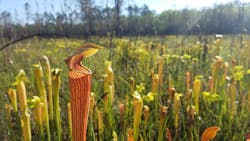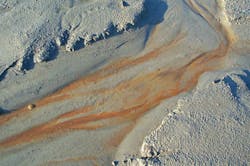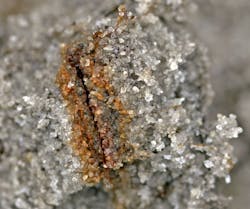New USACE tool improves wetland delineation efficiency
Scientists with the U.S. Army Engineer Research and Development Center’s Environmental Laboratory (ERDC-EL) and U.S. Army Corps of Engineers (USACE) Detroit District’s Regulatory staff are streamlining wetland delineation by developing Automated Wetland Determination Data Sheets (ADS).
The ADS will streamline wetland delineation data collection and reporting, facilitating responsible natural resource management and providing a valuable tool for the public.
Under the Clean Water Act, USACE is responsible for evaluating dredged or fill material discharge into U.S. waters, including wetlands.
“Generally, work involving those regulated activities in wetlands or other aquatic resources, like streams and rivers, requires a USACE permit,” said Kyle Gordon, ERDC Wetlands Regulatory Assistance Program manager, in a press release. “Every year, there are approximately 74,000 USACE regulatory actions related to wetland and aquatic resource permitting.”
Historically, environmental consultants and public sector practitioners collect field data, documenting wetland vegetation presence, hydrology, and soils on paper forms for submission to USACE for review during the permitting process. USACE regulators then evaluate the forms for accuracy. Technical and clerical errors on data forms submitted for review frequently slow the permitting process.
“The ADS are a practical, readily applied technology that streamlines and improves the accuracy of the permitting process by automatically calculating many of the field indicators of wetland vegetation, hydrology, and soils based upon user inputs,” said Dr. Jacob Berkowitz, ERDC-EL research soil scientist. “We’ve received very positive feedback from the private sector and agency staff who are now using the ADS to conduct wetland delineations across the nation.”
The ADS development is the result of collaboration between Berkowitz and Detroit District’s Regulatory Office biologist Nathan Schulz.
“Nathan developed much of the framework and code underlying the ADS, while ERDC did a lot of the early technical work on the data sheets,” Berkowitz said. “Once the template was set, Nathan did most of the execution and ERDC did a lot of the beta testing to ensure technical accuracy and demonstrate the value of the ADS.”
In addition to improving accuracy and efficiency, the ADS also incorporate the following elements:
- Similar layout as current Regional Supplement wetland determination data forms.
- Uses up-to-date National Wetland Plant List — currently version 3.5 — plant species wetland indicator status ratings.
- Applies up-to-date hydric soils — currently version 8.2 — field indicators.
- Automates hydrophytic vegetation field indicators calculations.
- Automates most hydric soil indicators interpretation and wetland hydrology.
- Automates features prompting users to correctly complete data forms for review.
- Exportable in a variety of electronic formats with formatting to print hard copies and generate reports.
Information about the ADS, including access to all of the forms and the associated User Guide, can be found here.
“The ADS will save USACE regulatory personnel time and make data collection more accurate,” Gordon said. “The ability of the forms to improve and expedite as many as 74,000 USACE Regulatory actions per year represents a significant advancement that better serves the American public while delivering the USACE mission.”




